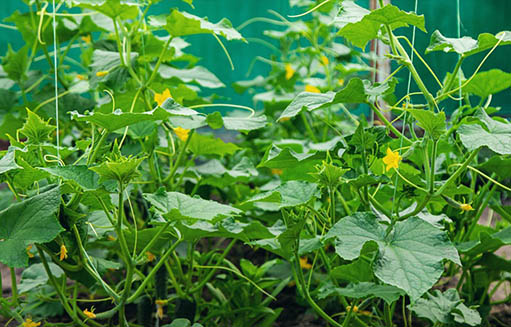Technical program of disease and pest control during the whole growth period of rape (2024-2025)
It is one of the important measures to improve the yield of rapeseed during the whole growth period. In recent years, due to the accumulation of pathogenic bacteria and climate, sclerotinia continued to increase in rape planting areas, root swelling disease continued to expand in the Yangtze River basin, and other pests such as ricochea and simiphylla increased their damage in winter rape areas of the Yangtze River basin and rape producing areas in the north and Qinghai-Tibet Plateau. According to the weather forecast, the temperature in most areas of China this winter is higher than that in the same period of the year, the precipitation in most parts of central and eastern parts is less, and the precipitation in some areas is obviously more, which is suitable for underground pests, aphids, seedling blight and cataplasis. The process cooling in winter will increase the risk of sclerotinia, black shank and other diseases. In order to strengthen the prevention and control of disease and insect pests in the whole growth period of rape, improve the prevention and control effect, reduce the damage loss, and consolidate the foundation of rape harvest, this program is formulated.
1. prevention and control strategies
Adhere to the plant protection policy of "prevention first and comprehensive prevention and control", adopt the prevention and control strategy of "advancing the threshold, treating early and treating young", pay close attention to the key periods of disease and pest prevention and control such as planting stage, seedling stage, sprout stage, flowering stage and green horn stage, and comprehensively adopt ecological regulation, physical and chemical induction control, biological control, scientific drug use and other technical measures. Rational use of insecticides, fungicides and plant growth regulators to achieve the organic unity of disease and insect control and harm control.
2. Prevention and control targets
Middle and lower reaches of Yangtze River and South three-ripe rapeseed producing areas: Including Shanghai, Zhejiang, Anhui, Jiangsu, Jiangxi, Hubei, Hunan, southern Henan and other regions, mainly for the winter rape area, focus on the prevention and control of sclerotinia, root swelling, blight (root rot), downy mildew, aphids, ape leaf armour, taking into account powdery mildew, black shank, black spot, black rot and underground pests, cabbage worm, cabbage moth, flea beetle and other diseases and insects.
Rapeseed producing areas in the upper reaches of the Yangtze River and Yunnan-Guizhou Plateau: including Yunnan, Guizhou, Chongqing, Sichuan, Hanzhong and Ankang areas in Shaanxi Province, mainly for winter rapeseed areas, focusing on the prevention and control of sclerotinia, root swollen disease, aphids, rapeseed, etc., taking into account white rust, powdery mildew, mildew, viral disease, underground pests, cabbage worms, cabbage moth, leaf beetles and other diseases and insects.
Rape producing areas in North China and Qinghai-Tibet Plateau: It includes parts of Hebei, Shanxi, Inner Mongolia, Shandong, north-central Henan, north-central Shaanxi, Gansu, Qinghai, Xinjiang, Tibet and other regions, with both winter and spring rapeseed, focusing on the prevention and control of sclerotinia, black shank, powdery mildew, rape horn botrytis, rapeseed, etc. Both white rust, downy mildew, black spot and diamond-moth, cabbage worm, European butterfly, beet moth, aphids, leaf beetle, stem weevil and other diseases and insects.
3. Prevention and control measures
(1) Rape planting period
First, seed selection and seed treatment.Select high quality and efficient rapeseed varieties with high density, high yield, fall resistance and disease resistance according to local conditions. In the area of severe root swelling disease, Huayu 62R, Huayu 5R, Huayu 115R, Shengguang 165R, Zhongyou 926 and other resistant varieties can be selected, and the sowing date should be postponed appropriately. Cold (freezing) resistance, drought tolerance, disease resistance and high yield of rapeseed cultivars in north China and Qinghai-Tibet Plateau were selected. The seed coating agent registered on rapeseed can be used for seed coating or seed dressing to reduce the damage of diseases and insects at seedling stage.
The second is crop rotation and soil treatment.In suitable areas, water and drought rotation, or rotation with barley, wheat and other gramineous crops, can effectively reduce the amount of pathogenic bacteria and insect source base in the field, and reduce the occurrence degree of rape pests and diseases. In the area of sclerotium disease, biological bacteria can be used for soil treatment, and in the area of root swelling disease, lime nitrogen (calcium cyanamide) can be used for soil treatment to reduce the amount of bacteria in the field.
(2) Rape seedling stage
Emphasis should be placed on the prevention and control of aphids, downy mildew, ape beetle, blight, root swelling, sclerotium and other diseases and pests. White rust, yellow tremola, rape stem weejias and other diseases and pests should also be controlled in North China and the Qinghai-Tibet Plateau. In addition to rational application of insecticides and fungicides to control pests and diseases, plant growth regulators were applied to improve the resistance to disease and stress of rape. The plant growth regulators could be brassinolide, diporphin iron, furfurine aminopurine, polybulozole, etc.
When the rapeseed aphids reached 500 plants, Metarrhizae anisopliae CQMa421 biologics or deltamethrin, thiamethoxam and other insecticides can be applied to control them. When the larva is obviously visible in the field, phoxius and other agents can be used to treat it. The areas where lepidoptera pests such as cabbage worm and Diamonds moth occur should be controlled with medicine before the third age of larvae. Rotenone, thiamethoxam and so on can be used to control jumping A pests.
When sporadic strains of blight were found in the field, medicine should be applied in time to control the spread of blight. For fields with up to 20% downy mildew plant rate, ethylallicin and deisen zinc spray can be used. Local control of sclerotium disease can be carried out in the field, conditions can be used in the area of scutellaria and other biological agents, timely prevention of seedling, inhibition of sclerotium germination, reduce the pressure of prevention and control of flowering. In the area of root swelling disease, biological fertilizer, rooting agent, immune inducer and so on can be used to improve plant resistance, and the diseased plant should be pulled out and destroyed in time when found in the field.
(3) rapeseed sprout stage
It is important to control aphids, prevent viral diseases, and treat sclerotium and downy mildew. The north and Qinghai-Tibet plateau rapeseed producing areas should pay attention to powdery mildew, white rust, cabbage insects and other diseases and insects. The prevention and control of pests and diseases in rapeseed sprout stage can effectively realize the advance of pest control threshold and reduce the occurrence base of pests and diseases in flower horn stage. At the same time, spraying of chlorin iron, amino acid water soluble fertilizer, new America star organic water soluble fertilizer can enhance the resistance to disease and insect resistance of rape.
When the harm of aphids is obvious in the field, timely prevention and control should be carried out to prevent the epidemic of viral diseases. The aphids can choose Metarhizium anisopliae CQMa421 biologics or deltamethrin, thiamethoxam, etc. In areas with perennial recurrence of sclerotinia disease or areas with autumn seedling disease, whole-plant spray should be used for timely prevention and control when the stem base infection is obvious in the field. The liquid should be able to contact the stem base of rape plants and the surface soil, and kill the mycelium that has germinated in the soil and the ascus plate formed. The agents can be fluzoylhydroxylamine, humus, and imidamine. The field with severe downy mildew disease can be treated by adding zinc and ethylallicin.
(4) rape flowering period
Focus on the prevention and control of sclerotium disease, as well as the treatment of powdery mildew, white rust and other diseases. Attention should also be paid to downy mildew, diamonds, aphids and the prevention of flower failure caused by boron deficiency in northern and Tibetan plateau rapeseed producing areas. When applying medicine, potassium dihydrogen phosphate, sulfur fertilizer, quick-acting boron, etc. with synergistic effect can be added to the medicine solution, as well as plant growth regulators, to implement "one promotion and four prevention".
In the heavily affected areas of sclerotinia disease, drug prevention should be implemented at the beginning of flowering of rape (the main stem flowering rate of rape is about 80%, and the rate of one branch flowering plant is about 50%). In case of continuous rain and long flowering period, the second drug prevention should be carried out at the flowering period (75% of the rape branches and stems have blossomed). Agents can be selected fluzoylhydroxylamine, pyridine, prophylaxis, imidamine, isomylurea and other agents, as well as pelpidium or bacillus and other biological agents. When the disease rate of downy mildew reaches 20%, ethyl alliin cream oil and mancozeb spray can be used. When the number of aphids reaches 500, thiamethoxam, deltamethrin and other agents can be used to spray evenly to treat other pests.
(5) rape green corner stage
Focus on aphids, powdery mildew, black spot, white rust and so on. In northern China and the Qinghai-Tibet Plateau rapeseed producing areas, it is also necessary to focus on the control of hornmoth, European butterfly, beet moth, aphids and so on.
When the rate of aphid branches in the field reaches more than 10%, apply medicine to control it. In the field, the incidence rate of powdery mildew and black spot reached 20%, and when the weather conditions were suitable, fluzamide could be sprayed for concurrent treatment. When the plant rate of rape downy mildew is more than 20%, suitable agents should be sprayed to control it, and 1-2 times should be sprayed continuously to treat other diseases. Other pests can choose Metarhizium anisopliae CQMa421 biological agent, abamectin cream, or deltamethrin, thiamethoxam and other chemical spray, sprayed 1-2 times.
4. Precautions
First, pay attention to scientific drug use. The selection of three complete certificates, qualified quality of the corresponding drugs, in strict accordance with the prescribed dose and concentration of scientific application, to achieve the accurate period, with sufficient dosage, scientific mixing, alternate drug use. When applying the plant protection drone, the water consumption per mu is not less than 1.5 liters, and the settler is added.
The second is to protect bees. Neonicotinoids such as thiamethoxam should be avoided during flowering application to prevent affecting the safety of honey gathering by bees.
Third, pay attention to resistance management. It is necessary to strengthen resistance monitoring and control, and other agents should be used in areas where resistance has developed, such as sclerotium and other bacteria that are resistant to benzimidazole agents, and carbendazoles and other agents should be discontinued to improve the control effectiveness.







